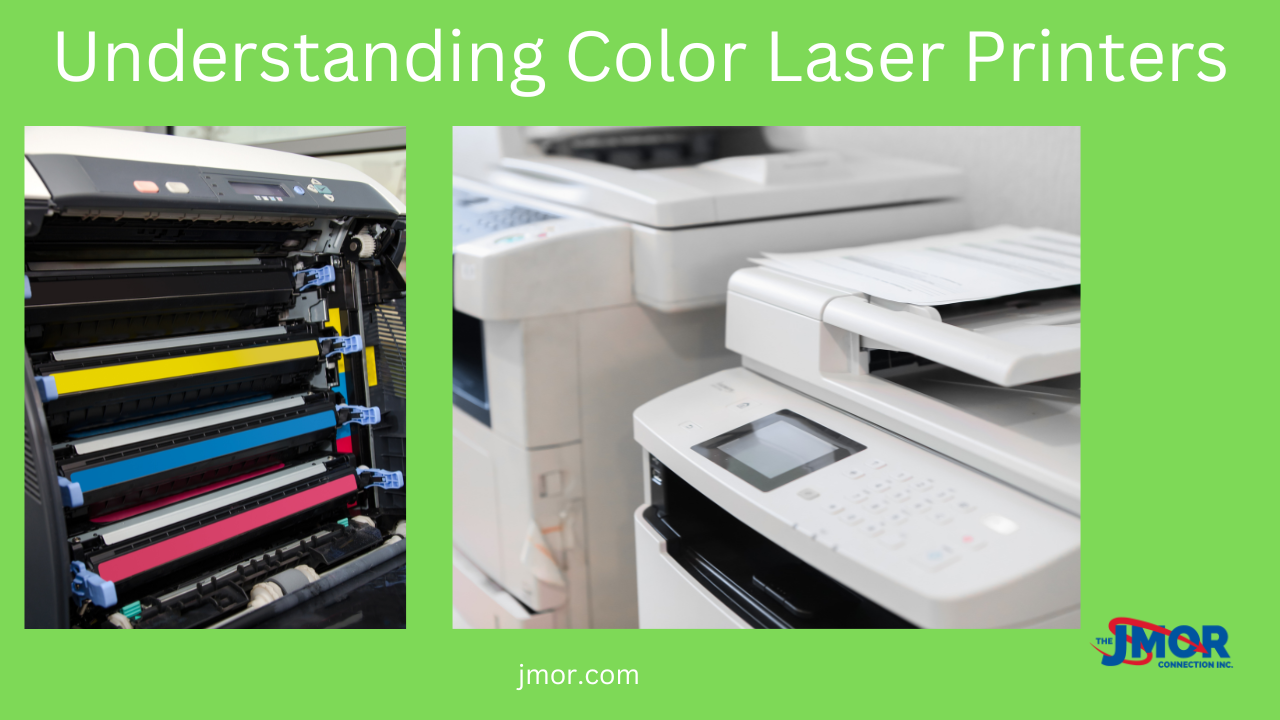Our business world and many homes rely on efficient technology to facilitate efficient, quality printing of documents, forms, letters, signs, and more, thanks to laser printers. Did you know the first laser printer was invented by Xerox in 1969, thanks to many hours of research and development from Gary Starkweather. He was the first to write an image on a drum and then transfer it to paper.
Since laser printers were relatively new to the market, the cost to purchase one was significantly higher than inkjet printers. However, the toner and other consumables for laser printers were less. Gary Starkweather, in 1971, was also responsible for developing the first networked printing system, which later earned Xerox billions of dollars. Around 1976, Xerox introduced its first commercial laser printer designed for data centers, the IBM 3800. The IBM 3800 replaced dot-matrix line printers and can handle large volumes of up to 215 pages per min.
Did you know that the first commercial laser printer was referred to as EARS (Ethernet-Alto-Research character generator-Scanning laser output terminal), built-in Palto Alto, CA, and later was named the Xerox 9700 Laser Printer? When 1979 rolled, Japanese camera and other optics companies joined the ship to deliver the world’s first desktop laser printer, and the first one announced was the LBP-10. The LBP-10 was engineered to be an affordable option for specialty businesses. Soon after, the Cannon-CX was made, which had a better print engine, and invited Hewlett-Packard and Apple Computer joined the party.
Xerox’s 8010, the printer model for office use, changed how admins worked globally. In 1984 Apple Computer and Hewlett Packard both released their laser printers. Now into 1985, we have the LaserWriter from Apple Computer used at schools, colleges, homes, and businesses. Also, Apple Computer was the first company to support the Adobe PostScript language on their printers.
Everyone loved laser printers but didn’t want to pay for them; thus, in 1995, the first laser printer was sold for under 1000 dollars and released, The HP LaserJet IIP. In 1995, Apple released its first color laser printer called the Color Laser Printer 12/600 PS, which used a canon engine and started with a price tag of 7000.00 dollars which today would be worth close to 11,000 dollars. It is not unheard of to get a few hundred dollars for a laser color printer. The catch back then and today is the same, the cheaper the printer, the more the supplies will cost you. Thus the converse is also true the cheaper the toner is; the more one will expect to pay for the laser printer.
Xerox did it again in 2000 by introducing printers that utilize solid ink printing technology for their home and business machines. This technology they pioneer was developed to preserve the environment, lower waste, and offer a more efficient higher, yielding ink. Furthermore, this advanced ink delivery system facilitated printing of densely rich, detailed prints.
Now that you know where the laser printer came from, let us learn how it works. First, did you know that your laser printer is a mini-computer that can format your information, so it appears correctly on a page? This starts with a mini-electronic circuit that activates the high-voltage corona wire. That emits static electricity to anything in its presence, and the drum or photocoupler receives an evenly positive charge from the corona wire. While simultaneously initiating the laser to write images of the page onto the drum. Interestingly, the laser doesn’t move and bounces off a mirror that coats the entire drum. Any location hit on the drum erases the positive charge with a negative one. Through this process, an image of the page is transferred, keeping the drum positive in areas where the page should remain white and where black is expected. The drum areas where black appears will be negative, respectively.
Now a roller that is coated with toner or also referred to as ink, touches the drum with tiny particles and gives the toner a positive charge, making it stick to the negative areas of the drum. Remember that no part of the drum with a positive charge will attract any toner/ink and facilitates an inked version of the page to appear on the drum cylinder. The onboard hopper sweeps toner onto the roller, and a blade levels it to the precise height. The drum then transfers the image to the ITB or (intermediate transfer belt), and this process happens for all colors in the laser printer C (Cyan), M (Magenta), Y (Yellow), and K (Black).
As the corona wire gives the IBT a negative charge. The negatively charged areas cause the positively charged particles to be attracted to IBT.
The IBT then transfers the image of toner lightly onto the paper and needs to go through the two hot rollers called the fuser to adhere permanently to the feed paper. Finally, it is ejected from the printer, remaining warm and explaining why we say hot off the press today.
Now that you understand how a laser printer works, you may be able to appreciate all the engineering that went into it so you can have a high-quality fast print from your printer.






